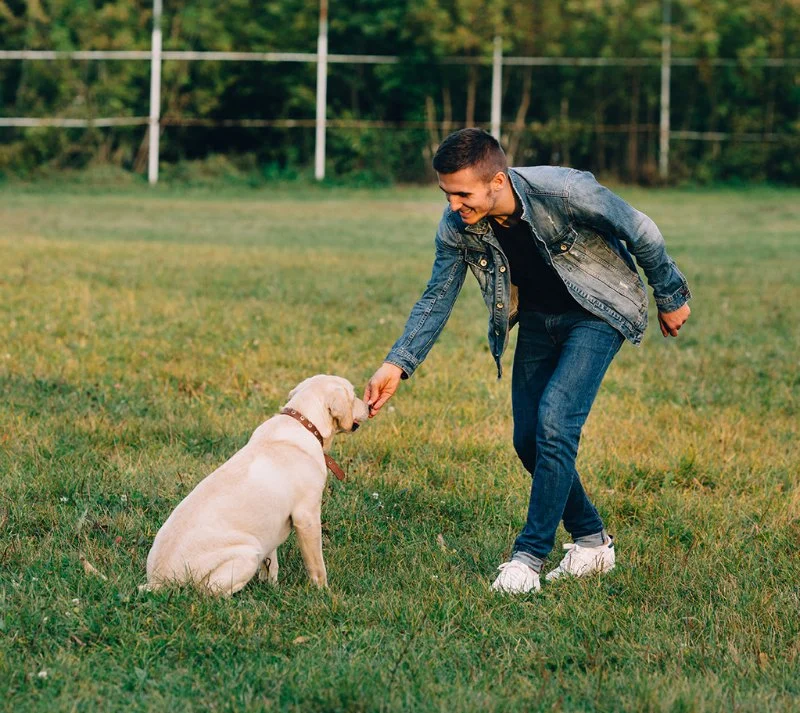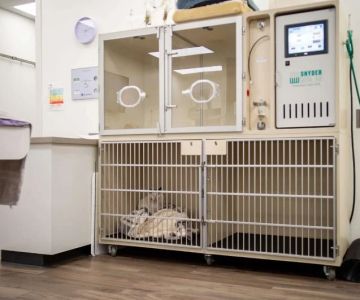
How to Encourage Recall in Off-Leash Training
- Why Recall is Important in Off-Leash Training
- Basic Recall Training Techniques
- Using Positive Reinforcement in Recall Training
- Gradually Increasing Distractions in Off-Leash Training
- Common Challenges in Off-Leash Training and How to Overcome Them
- When to Seek Professional Help for Recall Issues
1. Why Recall is Important in Off-Leash Training
Recall is one of the most essential commands for dogs, especially when it comes to off-leash training. Encouraging your dog to come back when called—whether in a park, backyard, or open field—ensures their safety and provides them with the freedom to enjoy their environment without the risks of running away or getting into dangerous situations.
Proper recall training helps strengthen the bond between you and your dog while also improving their general obedience. Whether you’re taking your dog on hikes, letting them explore a dog park, or simply enjoying outdoor playtime, reliable recall is a skill that offers peace of mind.
2. Basic Recall Training Techniques
Getting started with recall training can be easy and effective with the right techniques. Here’s how to teach your dog to come when called, even in distracting environments:
1. Start Indoors or in a Controlled Environment
Before moving to more distracting settings, start recall training in a quiet, familiar environment such as your living room or backyard. This helps your dog focus and minimizes distractions. Use a simple command like “Come” or “Here” and call your dog in an upbeat, enthusiastic tone.
2. Use a Leash Initially
Using a leash or long-line is a great way to reinforce recall during the initial stages of training. This allows you to gently guide your dog back toward you if they don’t respond immediately, ensuring that they understand the command before being off-leash.
3. Reward and Reinforce
Whenever your dog responds to the recall command, reward them with positive reinforcement. Use treats, praise, and affection to encourage the behavior. Consistent rewards teach your dog that coming back to you is a rewarding experience.
3. Using Positive Reinforcement in Recall Training
Positive reinforcement is one of the most effective methods for teaching recall. By associating the recall command with something enjoyable, your dog will be more motivated to respond. Here’s how you can use positive reinforcement to strengthen recall training:
1. Treats and Favorite Toys
Using high-value treats or your dog’s favorite toy can be a strong motivator. When your dog responds to the recall command, reward them immediately with a treat or a game with their toy. The key is to make the reward something that excites your dog and reinforces the positive association with returning to you.
2. Verbal Praise
Don’t underestimate the power of verbal praise. A simple “Good dog!” or “Yes!” when your dog responds to recall can encourage them to continue the behavior. Keep your tone enthusiastic and genuine to let them know they did something great.
3. Avoid Punishment
Avoid punishing your dog if they take a while to come back or don’t immediately respond to the recall. Punishment can create negative associations with the command and may make your dog hesitant to come when called in the future. Focus on rewarding good behavior instead.
4. Gradually Increasing Distractions in Off-Leash Training
Once your dog has mastered recall in a controlled environment, it’s time to introduce more distractions. This will ensure your dog can reliably respond to the recall command in real-world situations. Here’s how you can gradually increase distractions:
1. Start with Low-Distraction Areas
Begin training in areas with minimal distractions, such as a quiet park or an open field. Allow your dog to explore while maintaining control of the training environment. Gradually increase the difficulty by incorporating more distractions, such as other dogs or people.
2. Add Movement and Distance
As your dog becomes more reliable with recall, increase the distance between you and your dog. Call them from farther away, and add motion by walking away from them or having them chase you. This will teach them to respond to recall, even when they’re engaged in play or distracted by their surroundings.
3. Incorporate Real-World Environments
Once your dog is confident with distractions in controlled environments, take them to busier locations, such as a dog park or a hiking trail. Use recall commands in these settings to reinforce their response despite new sounds, smells, and sights.
5. Common Challenges in Off-Leash Training and How to Overcome Them
Off-leash training comes with its set of challenges. Here are some common issues and tips on how to overcome them:
1. Lack of Motivation
If your dog is not motivated to respond to recall, they may not see it as rewarding enough. Ensure you’re using high-value treats or toys, and vary the rewards to keep things interesting. Sometimes, changing the reward after a few repetitions can re-engage your dog’s interest.
2. Distractions
Distractions can be a major challenge during off-leash training. Start with smaller distractions and gradually increase the difficulty. If your dog struggles to focus, practice recall at home before progressing to more distracting environments.
3. Inconsistency
Inconsistency in training can confuse your dog. Be consistent with your commands, rewards, and training schedule. Make sure everyone in your household is using the same recall command and reinforcing the same behaviors.
6. When to Seek Professional Help for Recall Issues
If you’ve tried training your dog on your own but are still struggling with recall, it might be time to seek professional help. A certified dog trainer can offer personalized advice and work with you and your dog to overcome training hurdles. They can help you refine your techniques and ensure that your dog learns to respond to recall reliably.
For expert training tips and the best products for off-leash training, visit Pet & Puppy to find the right tools, toys, and services that will support your dog’s training journey.









 Baseline Animal Clinic4.0 (366 reviews)
Baseline Animal Clinic4.0 (366 reviews) Happiness is Pets3.0 (169 reviews)
Happiness is Pets3.0 (169 reviews) Pet Life Veterinary Clinic4.0 (159 reviews)
Pet Life Veterinary Clinic4.0 (159 reviews) Lovet Pet Health Care - Las Sendas4.0 (457 reviews)
Lovet Pet Health Care - Las Sendas4.0 (457 reviews) Veterinary Care & Consultation4.0 (2 reviews)
Veterinary Care & Consultation4.0 (2 reviews) Lovet Pet Health Care - White Tanks4.0 (861 reviews)
Lovet Pet Health Care - White Tanks4.0 (861 reviews) How Social Media Influences Pet Care Decisions and Pet Product Choices
How Social Media Influences Pet Care Decisions and Pet Product Choices Panleukopenia (Distemper) in Cats: Prevention & Signs You Should Know
Panleukopenia (Distemper) in Cats: Prevention & Signs You Should Know How to Spot Early Signs of Pet Kidney Disease
How to Spot Early Signs of Pet Kidney Disease What to Do After a Pet Emergency: Step-by-Step Guide
What to Do After a Pet Emergency: Step-by-Step Guide How to Detect & Manage Pet Ear Tumors: Signs, Treatment & Care
How to Detect & Manage Pet Ear Tumors: Signs, Treatment & Care Leash Pulling in Dogs: Causes & Effective Correction Techniques
Leash Pulling in Dogs: Causes & Effective Correction Techniques